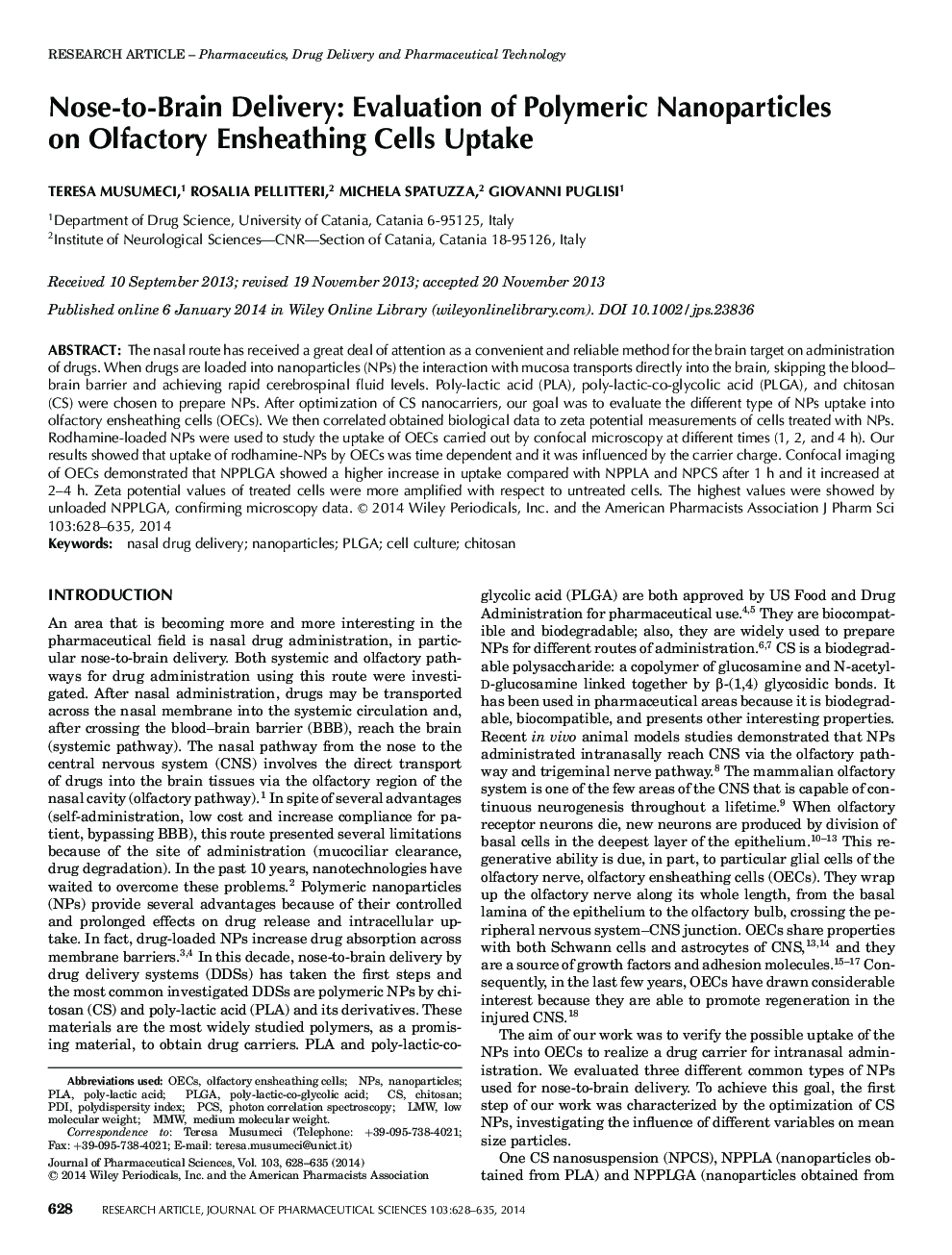| Article ID | Journal | Published Year | Pages | File Type |
|---|---|---|---|---|
| 10162609 | Journal of Pharmaceutical Sciences | 2014 | 8 Pages |
Abstract
The nasal route has received a great deal of attention as a convenient and reliable method for the brain target on administration of drugs. When drugs are loaded into nanoparticles (NPs) the interaction with mucosa transports directly into the brain, skipping the blood-brain barrier and achieving rapid cerebrospinal fluid levels. Poly-lactic acid (PLA), poly-lactic-co-glycolic acid (PLGA), and chitosan (CS) were chosen to prepare NPs. After optimization of CS nanocarriers, our goal was to evaluate the different type of NPs uptake into olfactory ensheathing cells (OECs). We then correlated obtained biological data to zeta potential measurements of cells treated with NPs. Rodhamine-loaded NPs were used to study the uptake of OECs carried out by confocal microscopy at different times (1, 2, and 4 h). Our results showed that uptake of rodhamine-NPs by OECs was time dependent and it was influenced by the carrier charge. Confocal imaging of OECs demonstrated that NPPLGA showed a higher increase in uptake compared with NPPLA and NPCS after 1Â h and it increased at 2-4Â h. Zeta potential values of treated cells were more amplified with respect to untreated cells. The highest values were showed by unloaded NPPLGA, confirming microscopy data.
Keywords
Related Topics
Health Sciences
Pharmacology, Toxicology and Pharmaceutical Science
Drug Discovery
Authors
Teresa Musumeci, Rosalia Pellitteri, Michela Spatuzza, Giovanni Puglisi,
